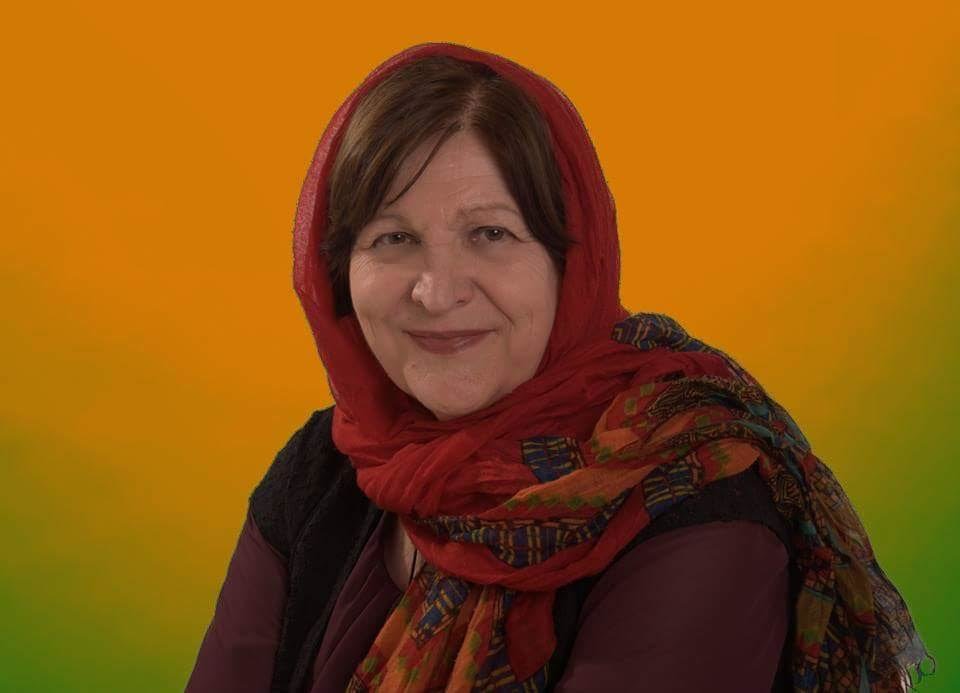Gizella sees Sizdah-Bedar return to childhood

TEHRAN -- Gizella Varga Sinai, the Tehran-based Hungarian artist who has spent about a half century living among Iranians, assumes Sizdah-Bedar to be an ancient tradition, which gives Iranian adults the chance to return to their childhood by engaging in childish games outside their homes.
By Manijeh Rezapoor
According to an ancient belief, Iranians usually spend the 13th day of Noruz in the natural fields and parks to ward off the bad omens of the day. The day spent outside is known as Sizdah-Bedar.
“I believe it is a good tradition. I was first impressed by this tradition when we decided to go out to a friend’s house in Damavand with my children many years ago but was locked in a traffic jam and we were forced to settle down in a place not so green and dusty. However, the children played a lot and still enjoyed the day,” Gizella said in her fluent Persian in an exclusive interview with the Tehran Times in the last days of February.
Gizella said that she is still fascinated with this tradition where people sit next to one another and live one day outside. “They bring what they have in their houses outside to nature; it is quite different with our picnic.”
She explained that she used to play with her friends and build something like a house from different things, pretending to make food with anything they could find such as pieces of clay, and then pretend they were in their homes cooking.
“Maybe on this day people need to experience and go through their childhood memories; maybe this is the revival of those old memories,” the mother of two girls, who are now married, explained.
A graduate of art at the University of Applied Arts Vienna, Gizella is married to the renowned filmmaker Khosrow Sinai and came to Iran about 50 years ago, but one can hardly guess that Gizella is not an Iranian. She speaks Persian fluently and her kind face reminds you of a dear one in your family; a kind auntie perhaps, a modest neighbor, or even a friend from long ago.
She also talked about the fond memories of her first impression of seeing pistachio. “When I was a little girl I used to hear about the Persian pistachio and I had no idea what it was. I always thought it might be some kind of heavenly fruit. When I got married with Sinai I saw a pistachio and was really surprised. Oh my God, is this pistachio, this little tiny thing?
“Then here, I saw the Haft Seen spread and Sizdah-Bedar and Charshanbeh Suri [the fireworks on eve of the last Wednesday of the year] and was more fascinated. The traditions and customs are still fascinating for me and have been source of inspiration in my works. I have them in my paintings as a non-Iranian artist,” she explained.
The artist said that she has chosen to duplicate goldfish in her paintings, although goldfish are not one of the symbols on the Haft Seen spread, and have been added to it. Goldfish in a bowl are mostly seen on the spread, as a symbol of liveliness.
In one of her paintings on her very first impression of Sizdah-Bedar, a fat woman is reclining on a piece of carpet with a cup of tea her husband has poured from a boiling samovar, while a dish of fruit is set in front of them and their children are also sitting next to them. Sabzeh (green sprouted seeds) is also seen in the painting.
“What surprises me the most is that a large number of people from every walk of life all sit next to one another, this still makes no sense to me: Why sit so close and under any conditions? Why do they stick to each other so closely and why do they do it this way,” she said with surprise in her voice.
In another part of her conversation she talked about Noruz and Easter, and said that she believes that Easter and Noruz are somehow similar. “We celebrate Easter and you celebrate Noruz. They both indicate the arrival of a new year.”
She continued that they follow the Iranian traditions of Noruz and set the Haft Seen spread, and that her husband still misses the sabzi polo mahi (rice and fried fish served on the eve of the first day of Noruz) his mother used to make.
“However, I also like to decorate the Christmas tree. The children have left us and I did not do it for two years but then again I thought I might like to do it for our own selves; it gives us the good feelings of the New Year so why not?”
When asked her about her ideas on Charshnabeh Suri, she said that she believes it is the time when people say goodbye to winter and celebrate the arrival of spring.
“People show somehow they have become weary of the hard and cold days of winter, and they are ready and anxious to welcome the warm days of spring. We also make some items filled with straw and put them in the fire in order to say goodbye to winter according to an old tradition in my country,” she explained.
The traditions and feelings are somehow the same all around the world, the exact dates and the rituals may differ, she added.
And finally asking her to give a recommendation to the youth in the coming New Year, she asked the youth to experience; to learn more and go after having more experiences in their lives.
Photo: “Sizdah-Bedar” by Gizella Varga Sinai
RM/YAW
END
